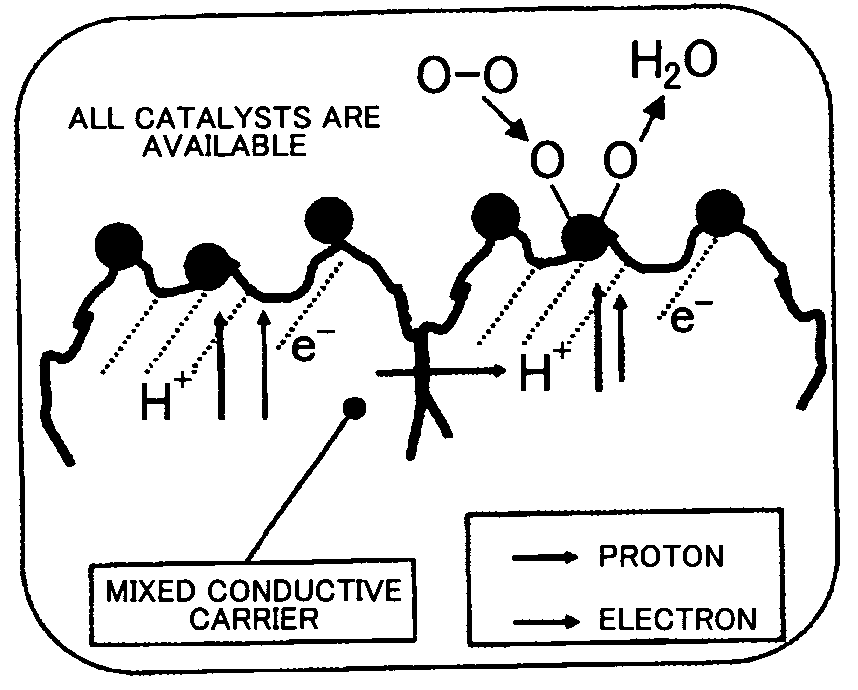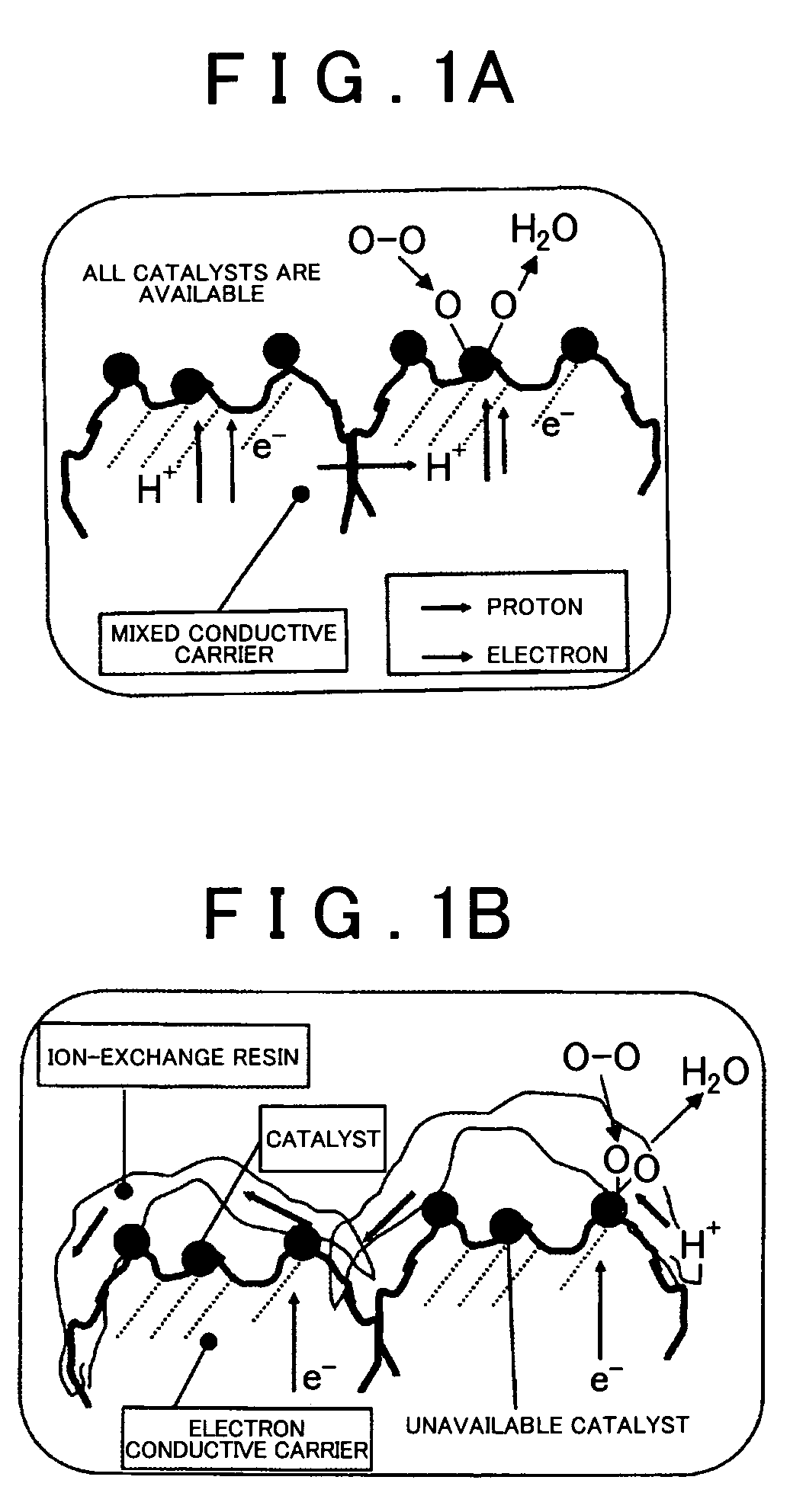Fuel Cell Reaction Layer, Fuel Cell, and Method for Producing Fuel Cell Reaction Layer
a fuel cell and reaction layer technology, applied in the direction of cell components, basic electric elements, electrochemical generators, etc., can solve the problems of difficult to create a completely uniform mixture, difficulty in smoothly introducing the electrode reaction, etc., to achieve improved electron conductivity and high proton conductivity
- Summary
- Abstract
- Description
- Claims
- Application Information
AI Technical Summary
Benefits of technology
Problems solved by technology
Method used
Image
Examples
example 1
Preparation of the Mixed Conductive Carrier
[0064]First, description will be made regarding a manufacturing method for a mixed conductive carrier with reference to the following Chemical Formula 1 and FIG. 4 and FIG. 5.
[Chemical Formula 1]
[0065]Resorcinol (10 g) and formaldehyde (13 ml) are dissolved in water (40 ml), and a solution created by hydrolyzing trimethyl phosphate is added to this solution. The solution thus created is dehydrated with Na2CO3 as a catalyst so as to form a gel. The gel thus created is dried under 120° C. conditions, thereby obtaining a precursor (see FIG. 4).
[0066]The precursor is heat treated (800° C.) under a nitrogen atmosphere, thereby obtaining a mixed conductor. The mixed conductor has a structure in which an electron conductor phases 7 and 7 having a graphite-like structure and a proton conductor phase 9 formed of a phosphate group are alternately layered. The mixed conductor thus obtained is ground in a ball mill, thereby obtaining a mixed conductive...
example 2
[0073]The Example 2 is generally the same as the Example 1, except that the amount of water-repellent carbon (manufactured by Cabot cooperation, trade name “Vulcan XC-72”), which is used for manufacturing the reaction layer on the oxygen electrode side, is 40% by weight with respect to the Pt supporting mixed conductive catalyst. The other steps are the same as those of Example 1, and accordingly, description thereof will be omitted.
PUM
 Login to View More
Login to View More Abstract
Description
Claims
Application Information
 Login to View More
Login to View More - R&D
- Intellectual Property
- Life Sciences
- Materials
- Tech Scout
- Unparalleled Data Quality
- Higher Quality Content
- 60% Fewer Hallucinations
Browse by: Latest US Patents, China's latest patents, Technical Efficacy Thesaurus, Application Domain, Technology Topic, Popular Technical Reports.
© 2025 PatSnap. All rights reserved.Legal|Privacy policy|Modern Slavery Act Transparency Statement|Sitemap|About US| Contact US: help@patsnap.com



